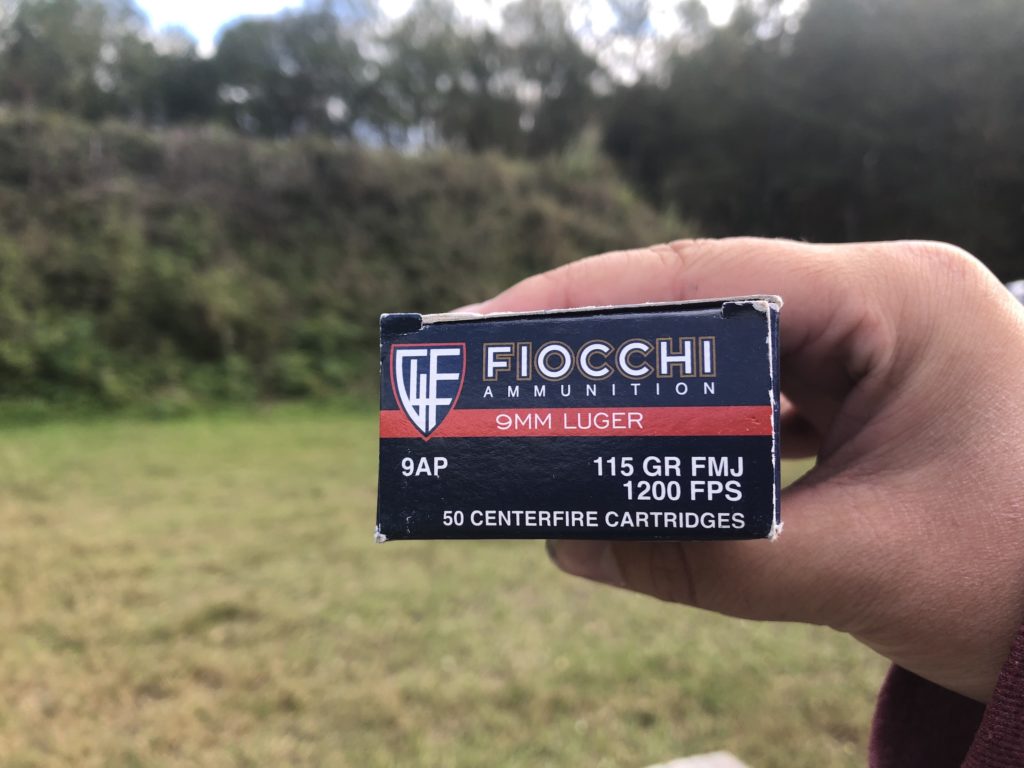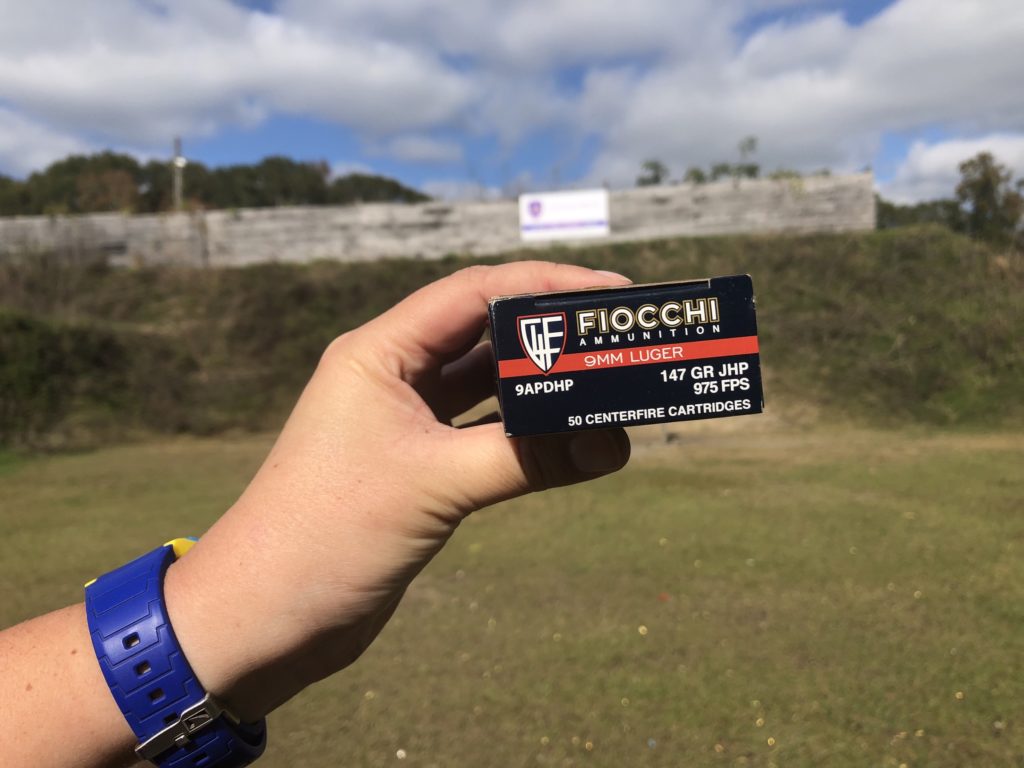If you don’t have time to reload your own ammo, the best thing for you to do is find factory pistol ammunition you and your gun likes and buy it in bulk. Thanks to Widener’s Reloading & Shooting Supply, they supplied me with two new factory rounds to try out for competition shooting.
I tested three factory rounds through my Walther Q5 polymer frame pistol. I know from experience that 147-grain ammunition provides less felt recoil in this specific pistol so I compared two 147-grain rounds (American Eagle full metal jacket flat point and Fiocchi jacketed hollow point) with practice ammunition I currently use, 115-grain Fiocchi full metal jackets.
I compared the factory pistol ammunition specifications of each round to show the difference in muzzle velocity and energy. Muzzle velocity is the speed at which the bullet leaves the muzzle of the firearm. The lighter grained bullets will move faster and will not drop as quickly as the heavier grained bullets because they have a higher muzzle velocity.
Muzzle energy is the measure of the kinetic energy of the bullet being discharged from the muzzle of the firearm. It is important to know how much energy your firearm and barrel can handle as a very high muzzle energy round can cause the destruction of a firearm. With the comparisons below, the lighter grained bullet is moving faster and takes more force to discharge, so the muzzle energy is higher than the 147 grained bullets.

| Brand | Fiocchi | Federal | Fiocchi |
| Bullet Type | Jacketed Hollow Point | Full Metal Jacket Flat Point | Full Metal Jacket |
| Bullet Weight | 147 Grains | 147 Grains | 115 Grains |
| Muzzle Velocity | 975 fps | 1000 fps | 1200 fps |
| Muzzle Energy | 310 ft/lbs | 326 ft/lbs | 368 ft/lbs |

Factory pistol ammunition will perform differently in different pistols because of factors such as pistol weight, design, barrel, and more. Consider which pistol you are shooting and if you’re starting from scratch, I recommend trying as many grains and manufacturers before narrowing down your search. When choosing a round to use, I’m looking for several things:
- The least amount of actual and felt recoil. In my polymer frame Walther Q5 pistol, for example, the heavier grained bullets gave me less felt recoil compared to the 115-grain practice ammunition. A great way to test this out is by loading five 147-grain bullets into a magazine and add five 115-grain bullets on top of those. If there is any difference to feel, you will be able to see and feel a difference in your recoil.
- Bullet drop on far targets. In some competitions I have been to, pistol targets have been set at 50-75 yards. Depending on your gun and bullet weight, you may see a difference in bullet drop at a distance. Where this may matter is if you are shooting for accuracy on paper targets and need to hit a certain zone on a target. When shooting at smaller steel at a distance, it’s good to test out your shots on paper to see if the bullet drops lower than your aim. If so, you’ll know where to hold on a smaller target at a distance.
- The ability of a bullet to spin spinner targets and cause steel to fall. This is one of the most important functions of ammunition for me to know before shooting a competition. If you’ve ever shot a spinner of any kind with a pistol, shotgun, or rifle, most likely you’ve switched out your ammunition for a heavier or more powerful round. Light loads and lighter ammunition doesn’t always get the job done. Both the American Eagle and Fiocchi 147-grain ammunition performed flawlessly at knocking down steel and having the proper impact and weight to spin a spinner target. Either of these rounds is great to use for stages at matches that have this type of steel present.
- Reliably cycling through the gun without any issues – failure to feed, double feeds, primer issues, stovepipes, and more. Test as many rounds of ammunition as your budget allows for. I typically want to go through 500 rounds of ammunition before I really get a feel for how it performs. Run the ammo through all of your magazines and test it by shooting Bill drills as well as slower, more methodical long shots. If any issues do occur, inspect the ammo to find out the reason why.

After shooting the two 147-grain rounds in my Walther Q5 polymer frame pistol, both rounds performed as desired. The heavier bullet gave me less felt recoil than the 115-grain ammunition. Both rounds packed the right punch to knock over and spin steel targets. As expected with good quality factory pistol ammunition, I didn’t have any problems with brass, failure to feeds, primer issues, or any other kind of malfunction.
What pistol do you shoot with and what ammunition have you found works best for it? What did you do to test it out? Share your knowledge in the comments so others may learn!






